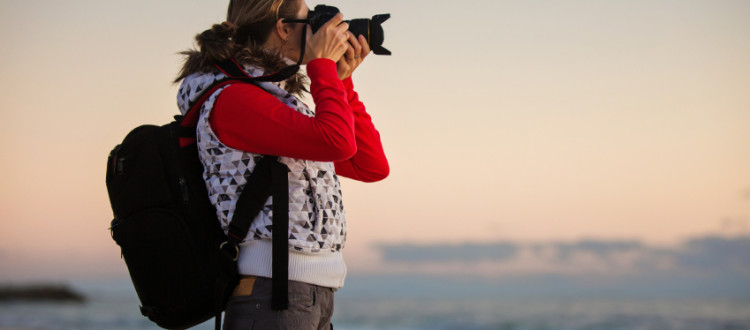Winter Photography Tips And Tricks
The winter months provide the perfect setting for stunning portrait and landscape photography. As gorgeous as the frosty backdrop for your photos may be though, it is easy for a great opportunity to turn into a missed opportunity without the right skills at hand. In this guide, we will go over some helpful winter photography tips to ensure your images turn out their best.
Be Mindful Of Daylight Hours
In the winter months, the sun rises later and sets earlier than it does in the summer. Because of this, you will have a shortened window of time to capture your winter photos. Keep a close eye on dawn and dusk hours, especially if you want to use the soft golden lighting that comes during these parts of the day.
Consider The “Mood” Of The Day
Many winter days are gloomy and overcast, which could be perfect for serious or dramatic imagery. If you’re trying to capture children playing in the snow though, you may want to wait for a winter day when the sun is out and the weather is nice. The “mood” of the day needs to match the tone of your intended photographs, especially when it comes to portraits. Watch the weather closely so you can plan your photos accordingly.
Use Colorful Accents
The bleak whiteness of winter can create beautiful black and white photos, but it can also turn your color photography into a monochromatic sea of light grey. In order to make the most of the white background you have to work with, use vibrant accent colors wherever possible. For portrait photography, ask your subjects to wear colors like cranberry, golden yellow, royal blue, and plum. These will show up well against the white and create a natural focal point for your photography.
Creating color contrast in landscape photography is a little more challenging because you cannot tell the trees to change colors. In this case, look for pops of color in the landscape and focus your photos on those areas. You can also take advantage of the golden hours (dawn and dusk) to cast colors in the sky or against the white blanket of snow on the ground. If you are in a public area, like a park or stadium, the manmade features in the area may provide the pop of color you’re looking for.
Adjust Your Exposure Settings (As Needed)
The whiteness of a snowy winter landscape can help the exposure settings of a frame, but it can also cause your camera to underexpose because of the reflectivity of the snow. In other words, your camera may convert the white snow into a light grey, making your images darker as a whole. You can compensate for this by adjusting your exposure settings to +0.3 or +0.7, depending on your needs. You may not have to adjust your exposure at all, but you need to be prepared to do this just in case your photos turn out darker than they should be.
Experiment With Creative Compositions
Winter photography can be extremely tricky from a composition standpoint. You could take a million mediocre winter photos that look just like anything you can pull from a basic Google Images search. In this time of year, it’s best to get creative with your positioning to see what sort of images you can come up with. For instance, you may consider putting your subject on the far left or right corner of the image with lots of landscaping in the background. You could try shooting with the sun behind your subject, even though that is often a cardinal sin in photography. Shoot from a lower- or higher-than-normal angle just to see what sort of photos you can produce. The goal here is to give yourself options so you don’t end up with frame after frame of the same snowfall.
Bring Spare Batteries
Cold weather eats away battery life faster than warm weather does. You should always have at least one spare battery with you when you’re going out to take photos, but it would be wise to have multiple charged batteries on hand when the temperatures are low outside. Tis same theory applies to your cell phone battery. You will need to make sure your phone is fully charged before you go out in case something goes wrong when you’re out in the cold.
Above All Else – Be Safe
Winter weather can be just as dangerous as it is beautiful. Think about your safety when you’re going out to take winter photography. If you are going to a remote area, make sure someone knows where you are going to be, and consider taking one or two people with you for an added precaution. Wear boots with traction on the soles to keep yourself grounded well on the snow and ice. Dress yourself in warm layers that you can remove as the temperature rises in the day. With the right safety precautions and the other tips listed above, your winter photography adventures are sure to be a success.











